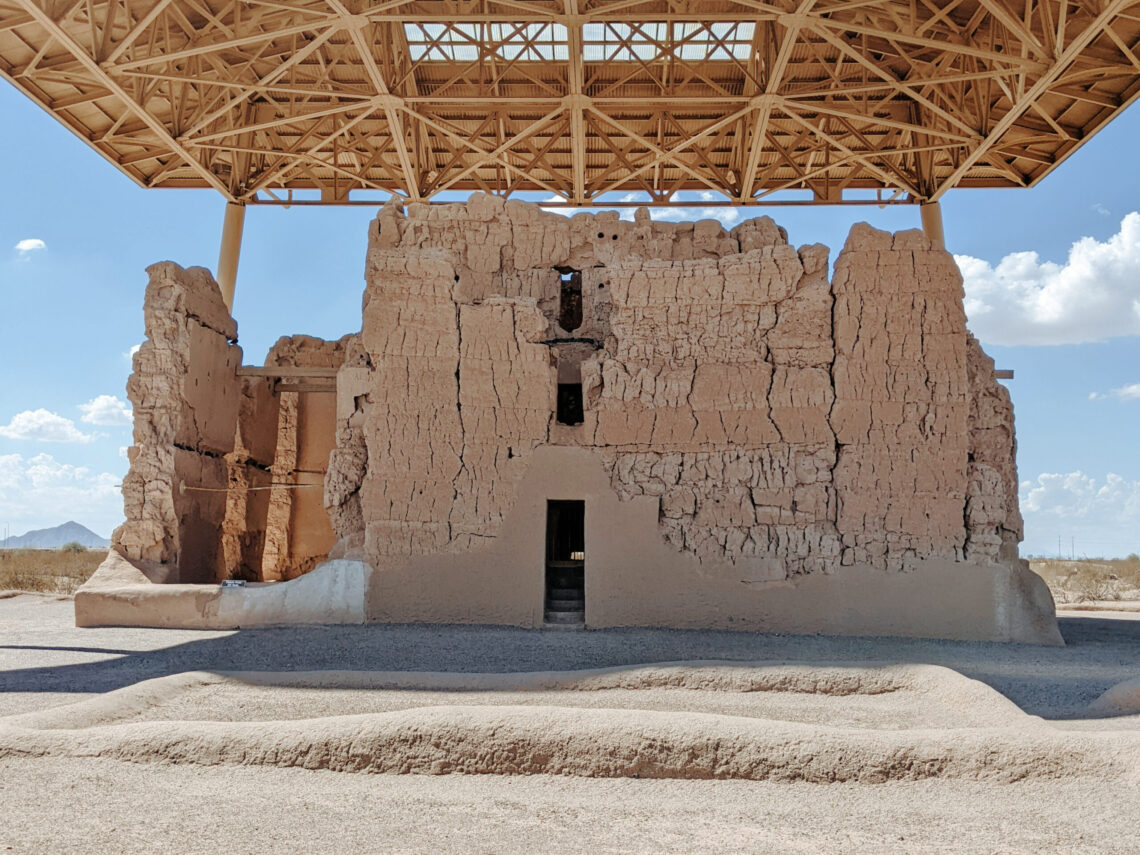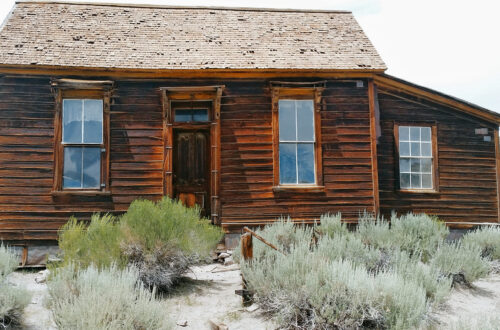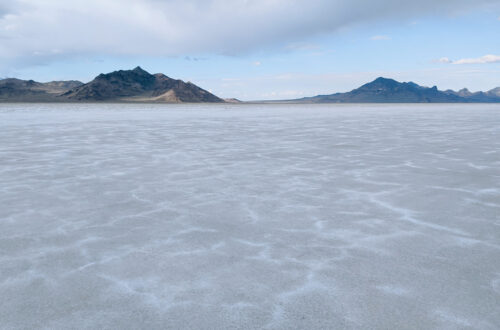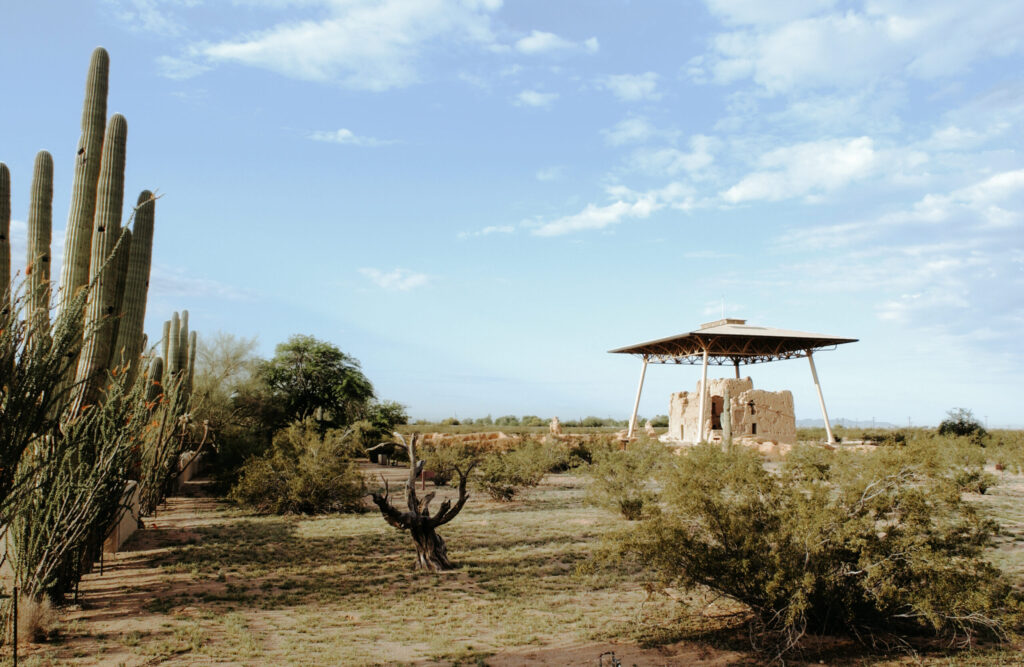
You can’t tell what it is from the road.
Driving through a seemingly endless stretch of desert scrubland with distant purple mountains filling in the boundaries of the horizon, you notice the protective roof structure first. It looks like a UFO hovering over the desert. There’s something misshapen beneath it, like shoddy bales of hay.
Last weekend, cruising down Arizona State Route 87, my cousin, my aunt, and I commented on the curious sight, but kept driving to our final destination. Before heading back, though, we looked into it and immediately decided to make it a stop on our way back. This roadside curiosity — the Casa Grande Ruins National Monument — became the highlight of my latest Arizona trip.
The Casa Grande Ruins and the Mysteries of Prehistoric Sites
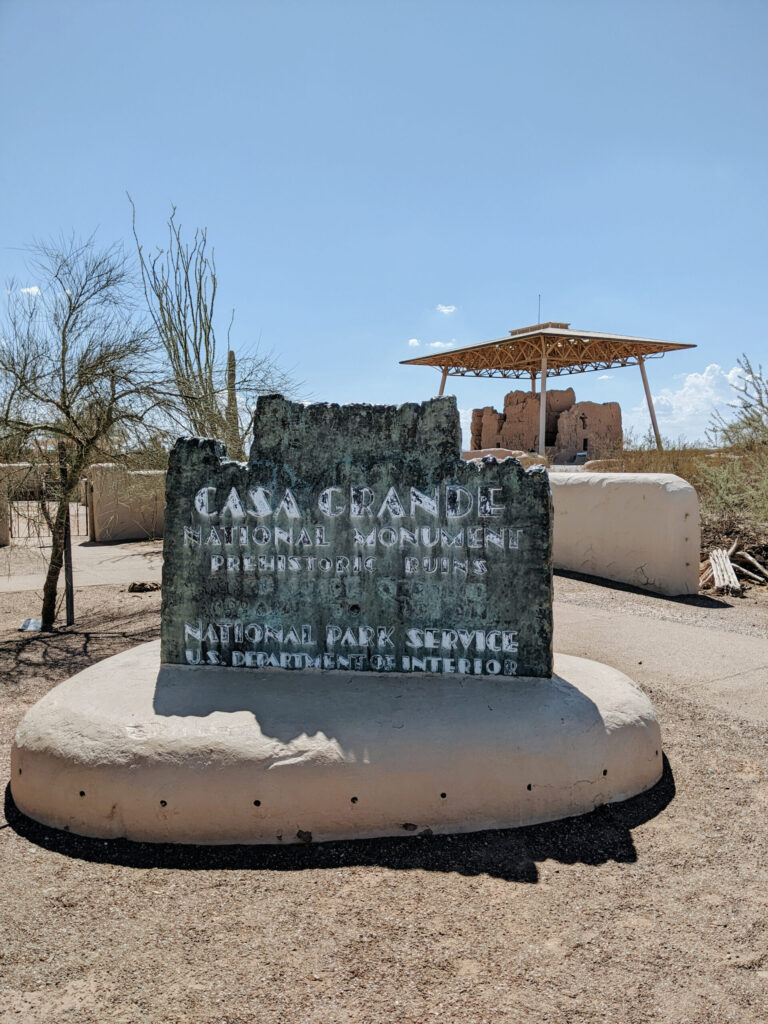
Holding the distinction of being the first prehistoric and cultural reserve established in the United States,1 Casa Grande Ruins National Monument preserves the Casa Grande — also known as the “Great House” or the “Big House” — and surrounding structures built by the Ancestral Sonoran Desert People. The Great House was the centerpiece of this village, thought to be the largest Ancestral Sonoran Desert People village in the Gila River Valley and a major center of irrigation farming and trade.
Today, the Casa Grande Ruins are the most intact and striking part of the preserve. You can stand in front of the caliche mud exterior and circle the ruins to get a good view from every angle, marking the rooms and halls delineated by crumbling interior walls. You do this in 90+ degrees Fahrenheit (32+ degrees Celsius) as the sun bakes the earth and the desert insects click and chirrup, unseen, from saguaros and mesquite and creosote bushes all around you — an experience that no photograph, YouTube video, or travel article could replicate. It’s a connection — not only with the place but with the past. Even when it’s more acknowledgement than understanding, this small act of reaching out across time is deep in the roots of human nature.
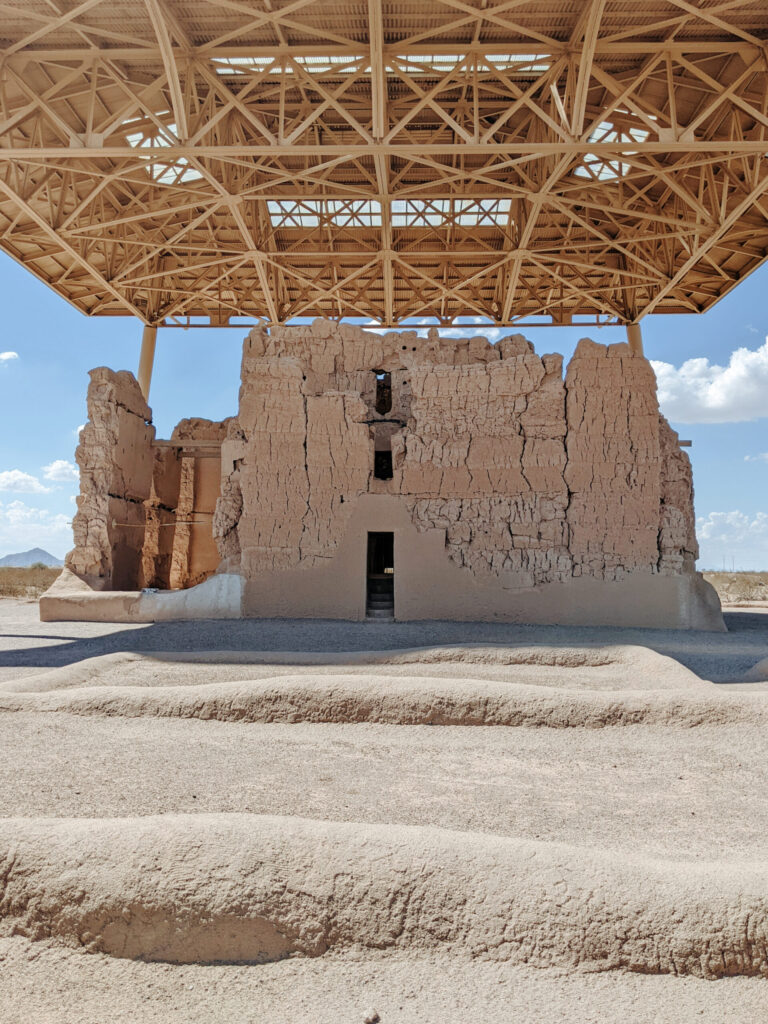
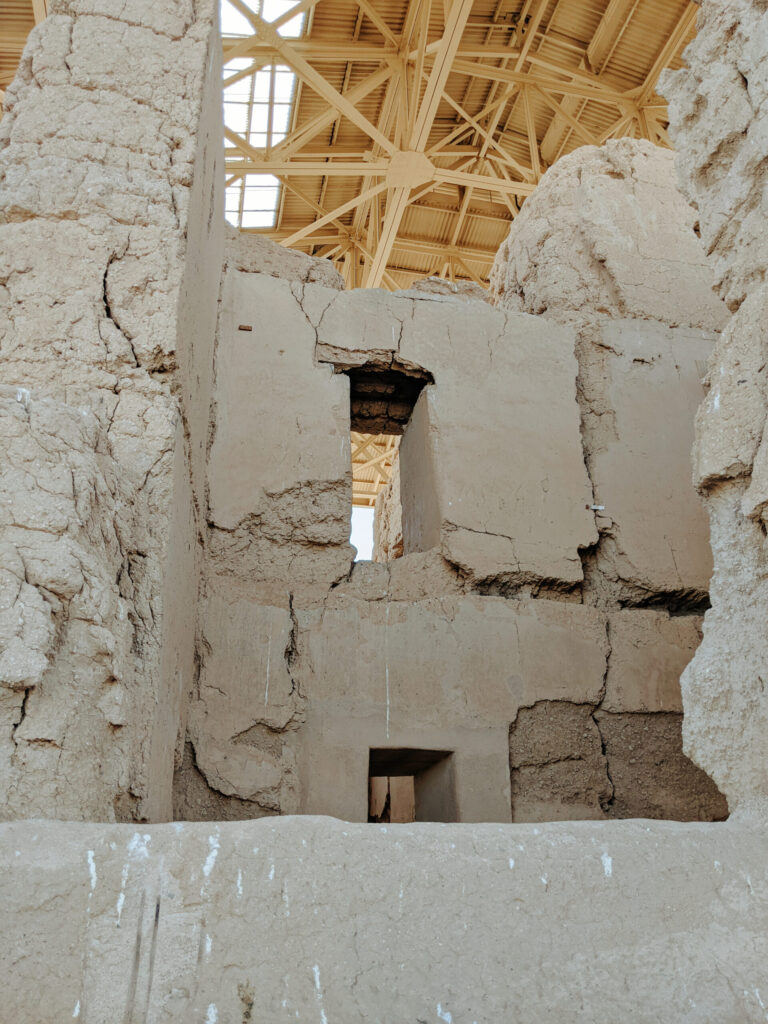
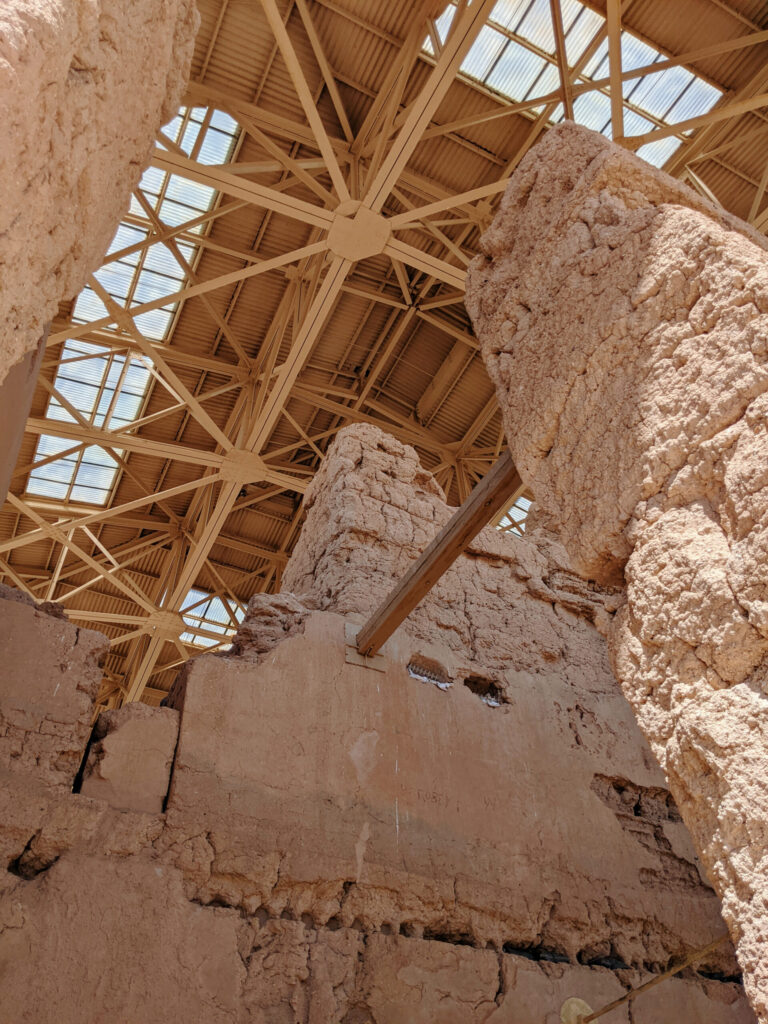
Even the Ancestral Sonoran Desert People who built the Great House felt this pull. We see this in the remains of an ancient ball court nearby — a center of community from another time. Dr. Doug Craig, archaeologist, explains:
“The presence of a ball court at Casa Grande […] signifies how people who built the Big House and some of the monumental architecture at the site needed a connection to the past as well. The ball court system really flourished between 800 and 1100, so it really predates a lot of what was going on at Casa Grande. But they still built it there, and it was still considered important, and probably a reflection of the importance of the past to those who were leading the community in the 1200s and the 1300s.”
– Dr. Doug Craig, National Park Service educational movie outtake, 2016
In a way, within a relic of the past, this ball court is a relic of the still more distant past, a mud-and-earth totem of our recursive looking-back, our endless quest to understand those who came before and, in turn, ourselves.
From the ruins of the Ancestral Sonoran Desert People to the portal tombs of Ireland’s prehistoric people and the megalithic temple of Ħaġar Qim in Malta, these ancient sites are the last lingering fingerprints of people who shaped our world. In many cases, preserves like these are shrouded in mysteries we may never have answers to, what with languages lost over time, written scripts undeveloped, and mementos of another time gone back to dust. But still these places remain as a way for us to explore our world — and its past iterations.
Archaeological Sites Show Us History In Situ
Even when the stories of our past are not so mysterious — when they’re well documented, shared, and understood — it can be difficult to truly see historical events as real and tangible. Standing beside a high-rise in New York City, is it simple to envision a time when the place was called New Amsterdam, or, before European settlement, when the bustling thoroughfare of Broadway was a Native American brush trail?
Of course not. That’s why a common sight in New York is, as author and historian Russell Shorto so artfully phrased it, “clusters of tourists zigzagging haphazardly through the area, guidebooks in hand, knowing that they are walking streets redolent of the past but having a hard time sniffing it out.”2 History, Shorto points out, “doesn’t exist only in the books in which it is recorded but in the places where it was lived.”2
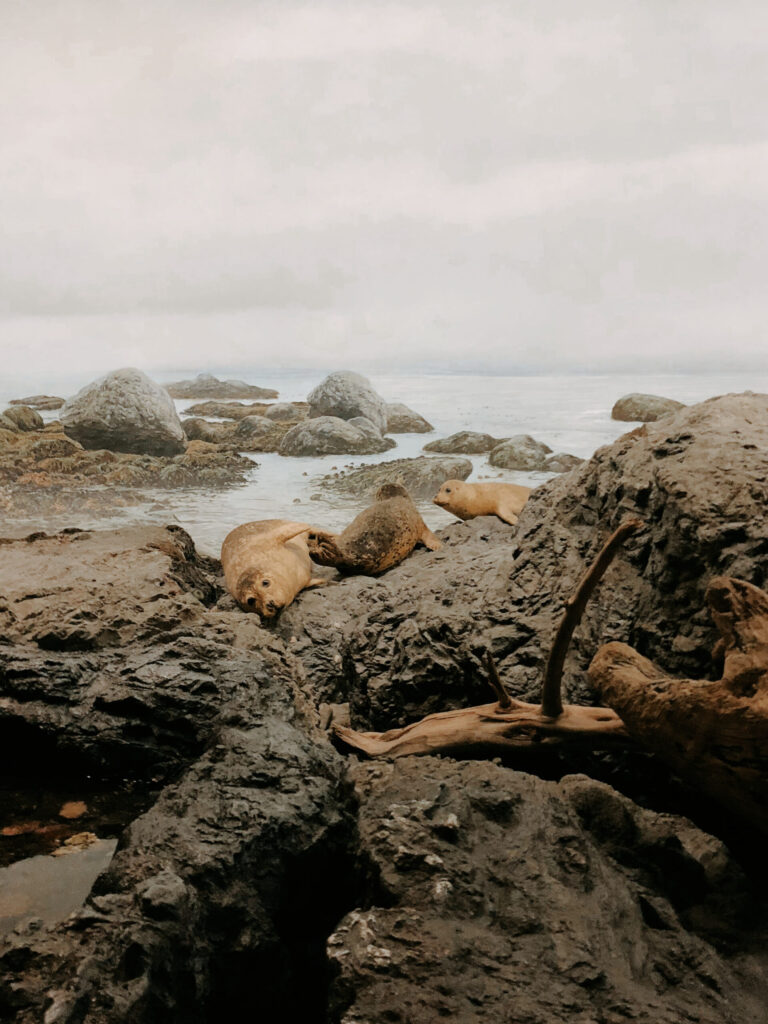
This is why archaeological sites and preserves give us such unique insight. While museums can give us a wealth of historical information and a wide-scale look at regional history, they do so in a way that is untied from place. Even grand museum displays with replicas of ships or styrofoam-and-plaster recreations of ancient housing fall short in this regard. Impressive and immersive though they may be, the inherently artificial nature of these displays gives much the same effect as the dazzling sets of theme parks. In vaulted halls and echoing floors, beneath A/C vents and fluorescent lights, these reconstructions have a sense of uprooted place, much like Hogwarts Castle at Universal Studios Hollywood.
Now, don’t get me wrong; I’m a great lover of museums and will gladly wile away the hours reading plaques and gazing intently at the grooves carved into an obsidian arrowhead. But history in situ? Glimpses of antiquity in its original place? That’s where the past stops pulling its punches.
Let me take you, for a moment, to Bruges, Belgium, where I received a particularly memorable gut punch from a segment of the wall in the Church of Our Lady. While the whole of this 13th-, 14th-, and 15th-century church is imposing in the best way (its tower is the tallest structure in the city), I found myself struck by a late medieval mural that had been rediscovered during restoration under multiple layers of paint. It was left exposed, visible to people passing through the church once again after some 600 centuries.
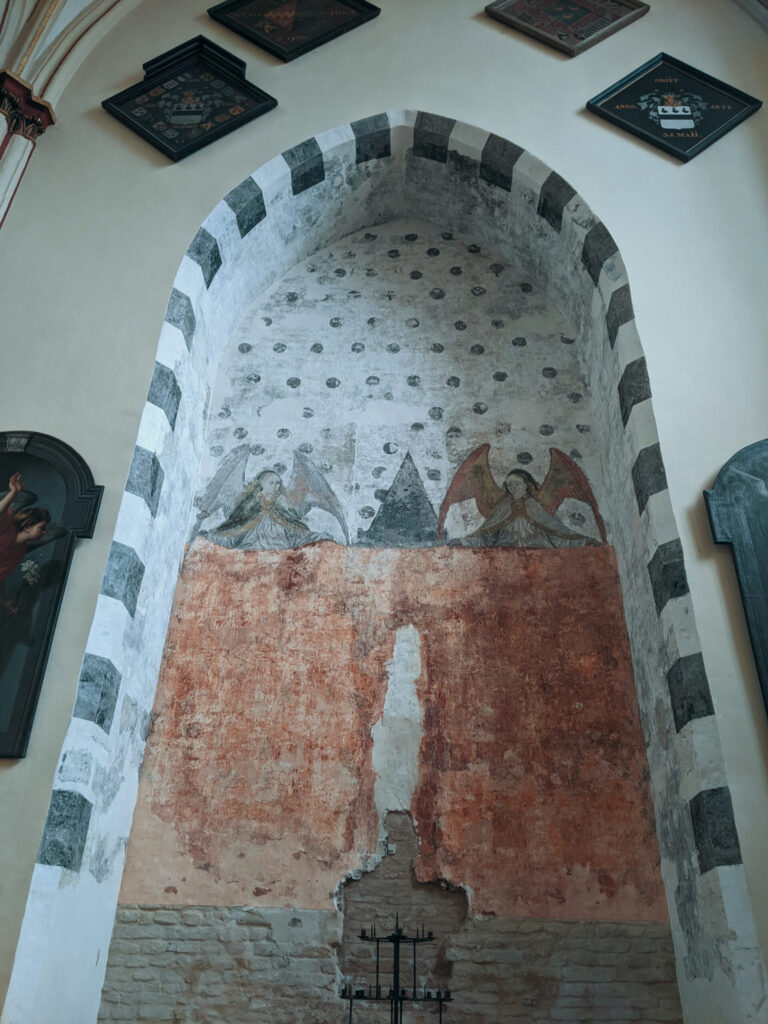
And I was acutely aware: people had stood where I was standing now, in medieval times, contemplating this very same painting. Someone, centuries ago, had devoted their time and talent to the art in front of me. Worshippers had gathered here — as they do today — in communion with one another and with God. This painting, for me, created a thread throughout history; like Ariadne with her string, I could follow the path back through the centuries. I could feel in that space the presence of all the people who walked here before me, the weight of their lives, the unfolding of time at the crux of this little church in this little town.
I still catch my breath when I think of it.
Ruins, relics, preserves, and their like — when remaining in place — hit so hard because they show us history in two dimensions at once: time and space. Because of this, if we as travelers want a deeper sense of place, a more experiential kind of travel, it’s my firm belief that archaeology is the ticket. History in situ is one of our most intimate ways of knowing a place.
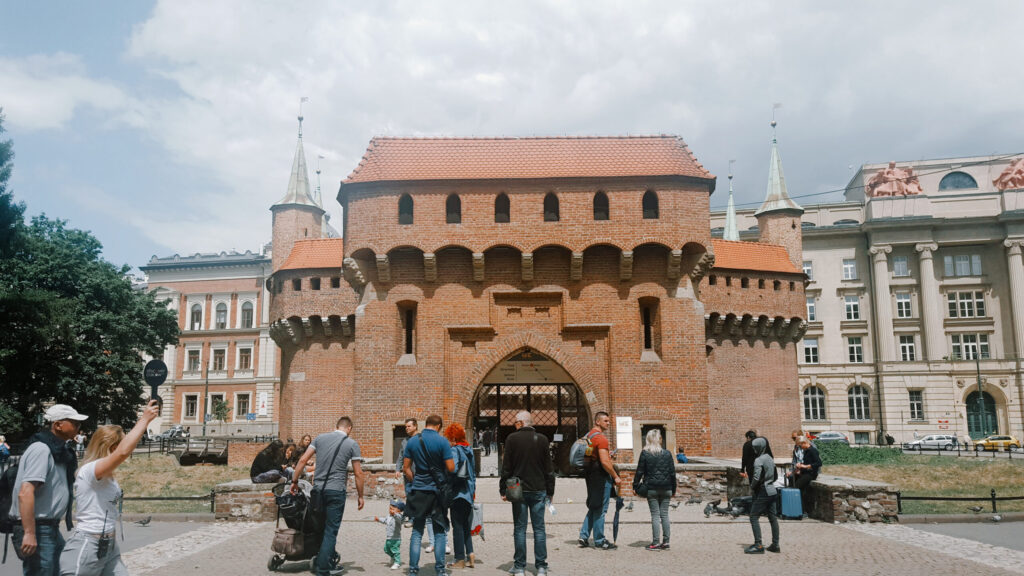
Go ahead. Stand before the Barbican in Kraków, Poland — the old gateway to the city, the medieval outpost that connected the fortified city walls that guarded against invaders — and tell me historic Kraków doesn’t slap you in the face with its immediacy, like it was there just yesterday. Like you were there.
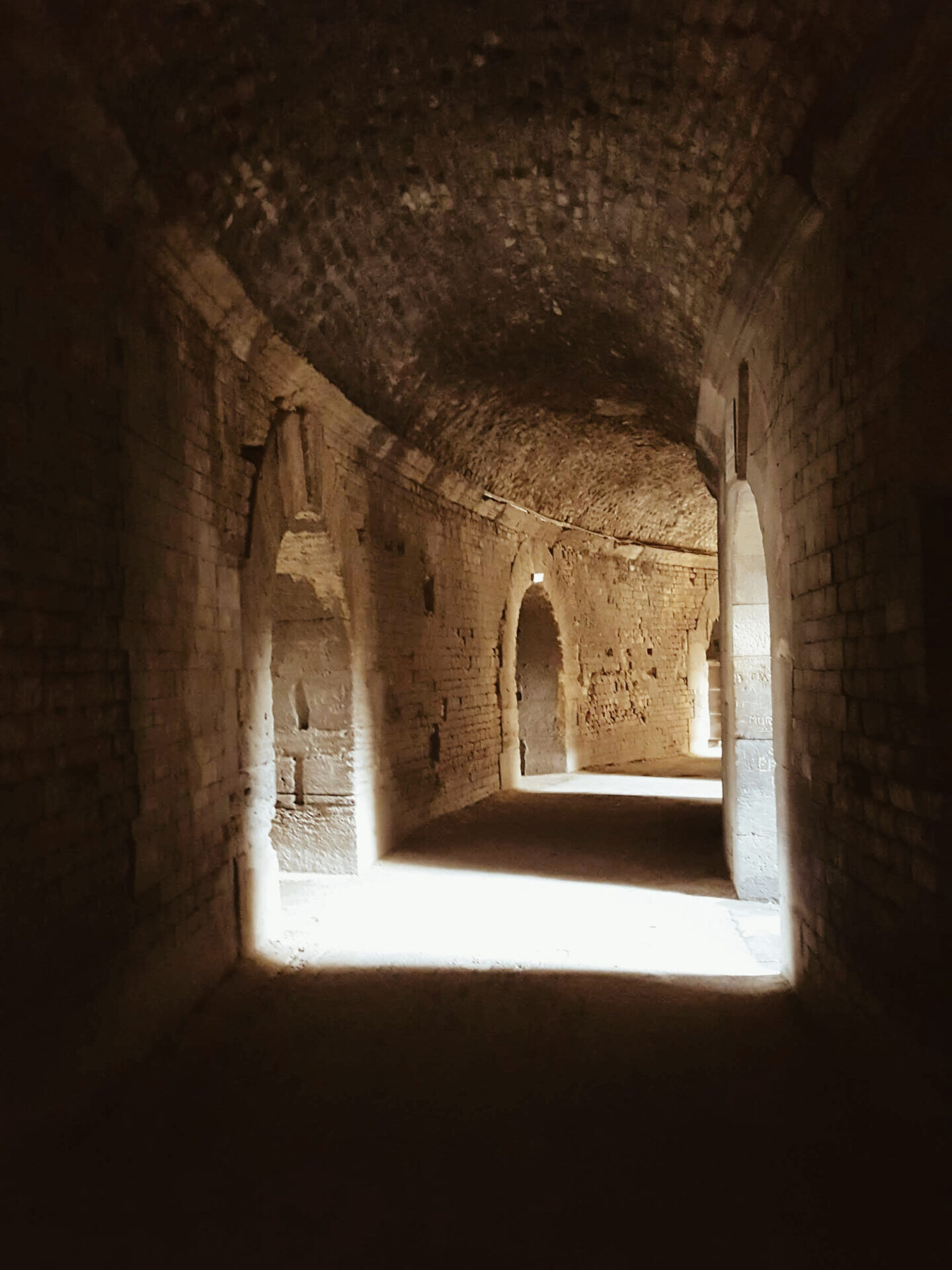
Prowl the passages of the old Roman arena in Arles, France, and tell me you can’t hear the roar of the crowd or smell the sweat of the gladiators.
It’s no secret that travel enriches your life. That the places you go, the people you meet, and the things you see all add uncountable value to your days. But I’d encourage you to add more archaeological sites to your itinerary when you go. To feel the past pressing up against you — that’s a step beyond enrichment, I’d say.
Enlightenment, maybe.
In Support of Cultural Preservation and Historical and Anthropological Research
And speaking of enlightenment, it would be remiss of me to talk about archaeology as travel and not mention a key benefit: supporting cultural preservation and academic research. Oftentimes, when you pay to enter an archaeological attraction — or donate while you’re visiting for free — you’re helping to fund the maintenance of that site. Your money may also go toward continuing research in related fields or expanded education initiatives. These worthy causes not only keep these opportunities open for future travelers but also invite even deeper exploration of the past.
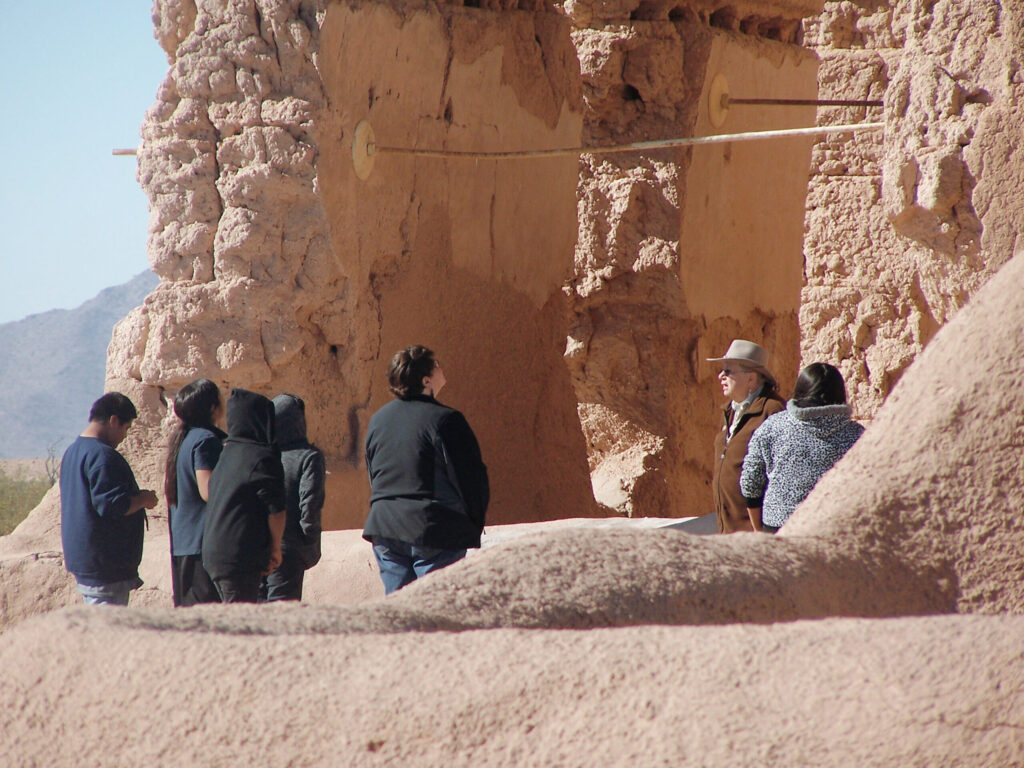
My donation to Casa Grande Ruins National Monument, for instance, will help maintain park resources and provide services to visitors. The ruins can be faithfully protected, the museum signage can be updated and improved, and kids can benefit from educational programs that bring history, nature, and social sciences to life. Like hikers taking nothing but pictures and leaving nothing but footprints, as travelers, we can play a part in keeping history accessible for future travelers — who may, one day, look back at us and acknowledge our place in the timeline too.
And all of us will keep reaching out for each other, a million faces turned toward a faded mural, saying, “I was here. And so were you.”
Thank you for exploring with us! Until next time, may the pages and paths ahead of you be great.
Sources:
- National Park Service. (n.d.). History & Culture – Casa Grande Ruins National Monument Arizona. https://www.nps.gov/cagr/learn/historyculture/index.htm
- Shorto, R. (2004, February 9). The Streets Where History Lives. The New York Times. https://www.nytimes.com/2004/02/09/opinion/the-streets-where-history-lives.html
